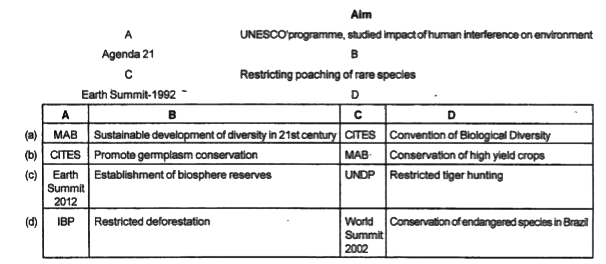A non-metal A is an important constituent of our food and forms two oxides B and C. Oxide B is toxic whereas C causes global warming.
(a) Identify A, B and C.
(b) To which group of periodic table does A belong?
The non-metal A is carbon. It is an important constituents of our food in different forms. For example, glucose (C6H12O6) contains carbon. In fact, all food materials are organic compounds and these contain carbon as essential constituent. The two oxides of carbon are, carbon monoxide (B) and carbon dioxide
(C ). Carbon dioxide causes global warming.
(a) A = Carbon (C ) , B = Carbon monoxide (CO) , C = Carbon dioxide (CO2)
(b) Carbon is the first member of group 14 in the Long form of Periodic Table.
Topper's Solved these Questions
- METALS AND NON-METALSBOOK - DINESH PUBLICATIONCHAPTER - METALS AND NON-METALSEXERCISE - HOTS
7 Videos
- CHEMICAL REACTIONS AND EQUATIONS BOOK - DINESH PUBLICATIONCHAPTER - CHEMICAL REACTIONS AND EQUATIONS EXERCISE - Multiple Choice Questions
18 Videos
- PERIODIC CLASSIFICATION OF ELEMENTSBOOK - DINESH PUBLICATIONCHAPTER - PERIODIC CLASSIFICATION OF ELEMENTSEXERCISE - PBQs
28 Videos
Similar Questions
A non-metal A is an important constituent of food and forms two oxides B and C. Oxide of B is toxic whereas C causes global warming. (a) Identify A, B and C. (b) To which group of Periodic Table does A belong ?
View SolutionThe non-metal A is an important constituent of our food and most of the fuels around us A forms two oxides B and C. The oxides B is poisonous whereas oxide C causes global warming.
(a) Identify A,B and C
(b) To which group of periodic table does A belong?
(c) Name another element which is placed in the same group as A
View SolutionA nonmetal 'X' is an important constituent of all living organisms and it forms two oxides Y and Z which are gases. Y is toxic while Z is responsible for global warming. Identify X, Y and Z.
View SolutionA non-metal A which is the largest constituent of air, when heated with H2 in 1 : 3 ratio in the presence of catalyst (Fe) gives a gas B. 0n heating with O2 it gives an oxide C. If this oxide is passed into water in the presence of air, it gives an acid D which acts as a strong oxidising agent.
(a) Identify A, B, C and D.
(b) To which group of the periodic table does this non-metal belongs?
View SolutionWhen an oxide of Mn
(C). Identify A, B, C.
View Solution
Identify A, B, C and D in the above table

View SolutionStudy the gjven table and identify A. B, C, and D.

View SolutionAn element A on combining with O2 produces an oxide A2O which is basic in nature.
(a) How many electrons must be there in the outermost shell of the element A? (b) To which group of periodic table it belongs? (c ) Identify whether it is a metal or non-metal.
View SolutionAn element X combines with oxygen to form an oxide XO. This oxide is electrically conducting.
(a) How many electrons would be there in the outermost shell of the element X?
(b) To which group of the periodic table does the element X belong?
(c) Write the formula of the compound formed when X reacts with chlorine.
View SolutionA salt 'A' on heating forms the oxide of the metal 'B' and a gas 'C'. 'B' is used in white washing . When C is passed through water it forms 'D'. Identify A, B, C and D. Justify the usage of 'C' for the above purpose.
View Solution
